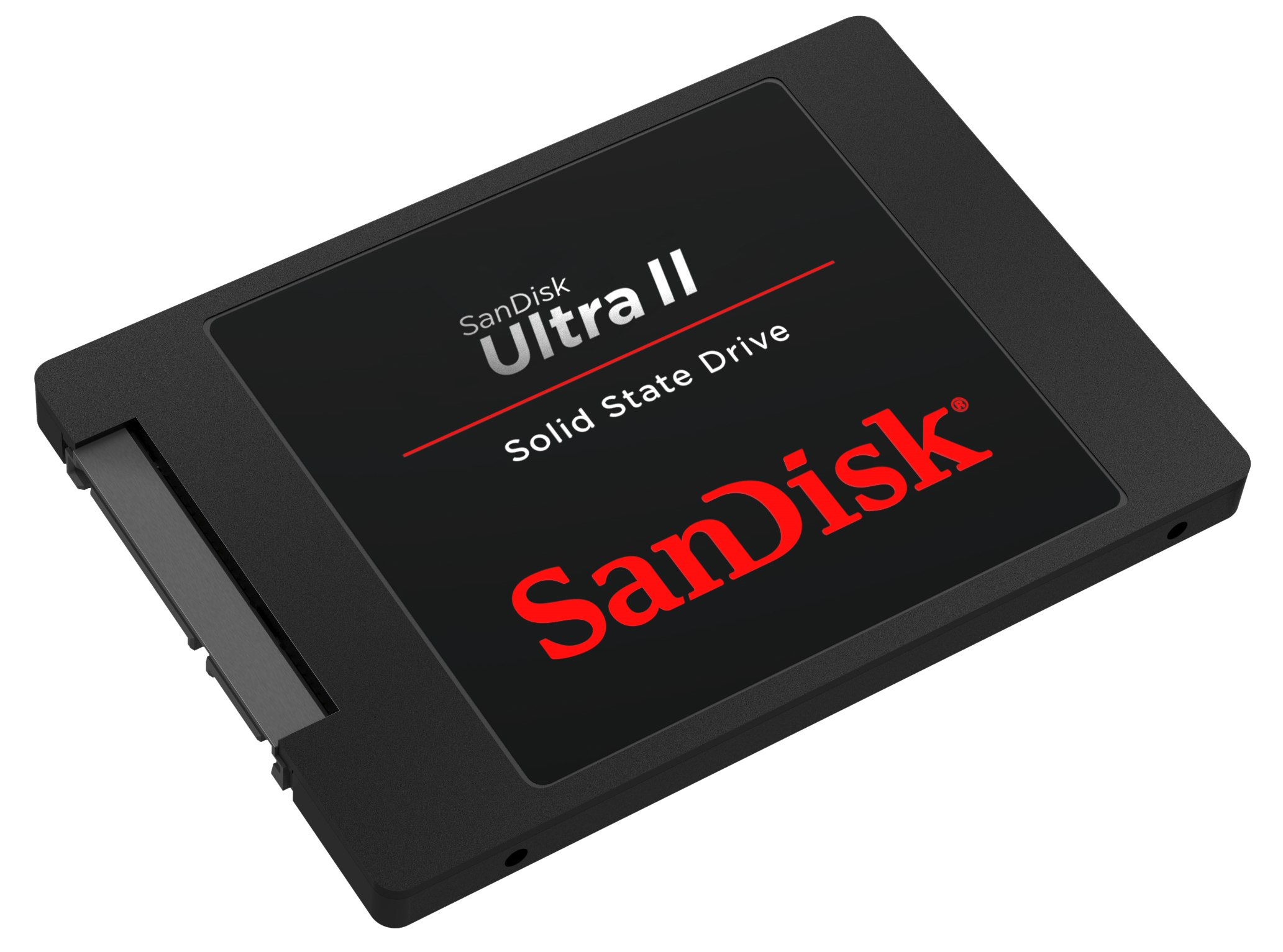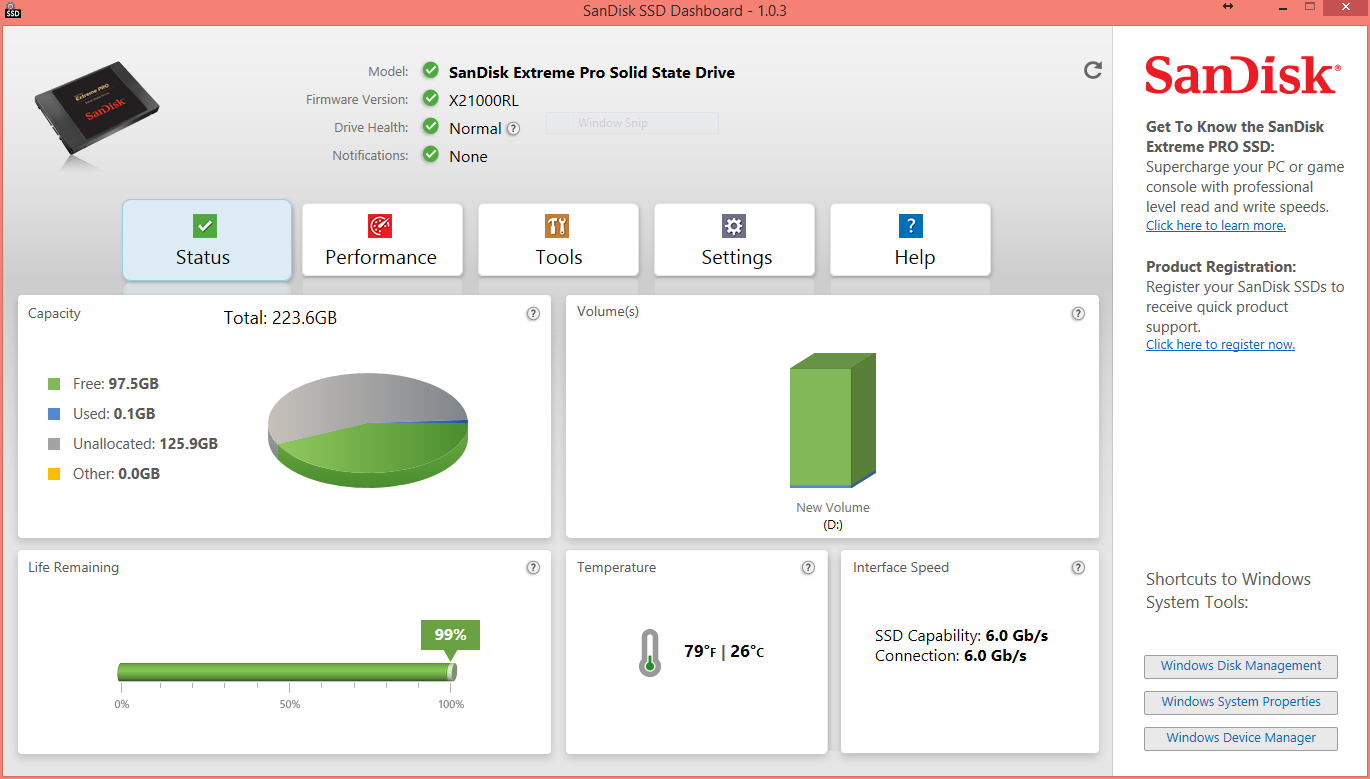SanDisk Unveils Updated Ultra SSD, Adds New Software
SanDisk has formally announced its new value SSD, the Ultra II. Last year's Ultra Plus ended up sneaking into our Best SSD For the Money column as a downright innovative solution for entry-level SSD buyers. It paired SanDisk's 19 nm Toggle NAND with Marvell's four-channel 88SS9175 silicon, and though comparatively weak on horsepower, it managed to cut through the crowd with a clever emulated SLC caching strategy. As a result, even the 64 GB model could boast strong results in our trace-based benchmarks, which tend to help place real-world performance into context.
So, to follow up, the California-based SanDisk is updating the design premise with new flash, silicon and firmware, too -- including an improved version of nCache. SanDisk's more economical 1Y flash (also based on 19 nm lithography, but in a newer compacted design) makes an appearance here, and the result is a dramatically quicker drive. But, two other features are likely to make a larger impact on sales than just better specs -- price and software.
The older Ultra Plus found itself in the awkward position of being a stellar value drive, except that it was frequently as expensive as some performance-minded competitors. This time around, SanDisk has hung some super-competitive MSRPs on the entire line, which includes 120 GB, 240 GB, 480 GB, and 960 GB capacities. The 120 GB should see MSRPs around $80, while the 240 GB is set at $115. The far larger 480 GB and 960 GB models are expected to sell for $220 and $430, respectively. SanDisk's internal performance estimates show promise, though public performance information is limited to just sequential performance. With nCache 2.0, even the 120 GB should -- at least temporarily -- achieve 500 MB/s when writing, and all drives should manage 550 MB/s on reads.
The Ultra II's other key selling point is software. SanDisk's SSD utility, known simply as Dashboard, started off as a simple software package as SanDisk began its push into the consumer SSD space a few years back. Now, the Ultra II will get first dibs on the latest version of the utility which has recently evolved into the same league as Intel and Samsung's SSD full-featured drive management kits. However, this isn't so much what SanDisk hopes will catch the eyes of prospective buyers; Instead, it's the combination of software partnerships the firm has arranged.
The Ultra II, when used with the upcoming Dashboard update, will open up a trio of third-party utility offerings. SanDisk reps claim that the Ultra II is primarily centered on first-time SSD buyers and those swapping HDDs for SSDs. As such, their software partnerships also reflect this fact. TrendMicro's Titanium Antivirus+ is bundled in for AV duties, as is Apricorn's EZ Gig II cloning software. Lastly, Absolute Software's Absolute LoJack is an anti-theft subscription service which can aid in recovering a system should it become lost or stolen.
Individually, none of the software add-ins does much to tilt the value equation one way or the other. Collectively, though, it's a fairly comprehensive package, and LoJack's theft prevention/tracking software is the most attractive extra. A single-year LoJack subscription runs in the $60 range for laptops, and because it installs itself into the UEFI/BIOS, it's not easily removed. Simply erasing or replacing the boot disk won't eradicate the service, thus making it harder to hide a stolen laptop's location from all but the most savvy thieves.
EZ Gig IV, on the other hand, only works once; that is, users just get a single successful clone of an existing system image to a new Ultra II before Apricorn's license expires. A single completed clone operation is probably sufficient for most mainstream buyers, but there are better bundled cloning solutions out there with fewer (or no) restrictions.
Get Tom's Hardware's best news and in-depth reviews, straight to your inbox.
We'll have samples in hand soon, but the Ultra II won't hit shelves until mid-September. It's too early to tell just how SanDisk's new SSD will stack up, but with all the competition out there, getting top marks at the bottom of the price ladder makes all the difference. SanDisk's track record has been commendable on that front lately, so it's hard to imagine the Plus' successor flopping there. How consumers will feel about the Ultra II's software bundle is difficult to predict, but SanDisk's work with independent software vendors at all levels of its storage business is likely to continue as a strategic endeavor.
Follow us @tomshardware, on Facebook and on Google+.

